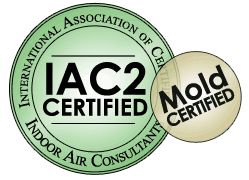Mold
Mold colonies, often unseen, can develop and grow inside wall cavities, crawlspaces, furnishings and plants and almost any area of a home. They release their spores into the air we breath the spores can also be absorbed into our eyes, nose, throat and lungs. It is estimated that approximately 30 % of us are allergic to mold and suffer adverse health effects because of it.
 The United States environmental protection agency recommends that every home in America be tested for certain environmental pollutants, regardless of age, location or style of your home. You and your family may be exposed to hazardous levels of contaminants 10 to 20 times greater then found outdoors and without knowing why, experience systems that are often overlooked by doctors as everyday medical complaints. Even if everyone in your family feels great, it is still recommended that you test your home to prevent health problems before they occur.
The United States environmental protection agency recommends that every home in America be tested for certain environmental pollutants, regardless of age, location or style of your home. You and your family may be exposed to hazardous levels of contaminants 10 to 20 times greater then found outdoors and without knowing why, experience systems that are often overlooked by doctors as everyday medical complaints. Even if everyone in your family feels great, it is still recommended that you test your home to prevent health problems before they occur.
Mold requires moisture and organic matter to feed upon. High relative humidities are required for germination and growth while lower humidities tend to increase the release of mold spores as a method for self-preservation. CONTAMINATED CENTRAL AIR HANDLING SYSTEMS CAN EASILY BECOME BREEDING GROUNDS FOR MOLD.
Mold exposure systems that can and are often over looked by people and physicians as common, everyday medical complaints include:
- Depression
- Chills
- Irritability
- Fatigue
- Anger
- Sleep disorders
- Fear
- Hay fever/ allergy type symptoms
- Coughing
- Loss of appetite
- Wheezing
- Skin rashes
- Runny eyes and nose
- Hypersensitivity
- Muscular aches
- Asthma
- Fever
- Inability to concentrate
- Headaches
- Confusion
If you suspect exposure, seek help of a qualified physician immediately and have your home or work place tested as soon as possible by an environmental specialist like Sun Environmental.
Our mold testing goes beyond just the testing phase. We come in, determine what is happening and why, and offer solutions to correct the problem. Samples are taken and sent to the lab, thermal imaging is performed to scan for moisture behind walls, moisture meter readings are taken and a report is written which specifies what needs to be done.